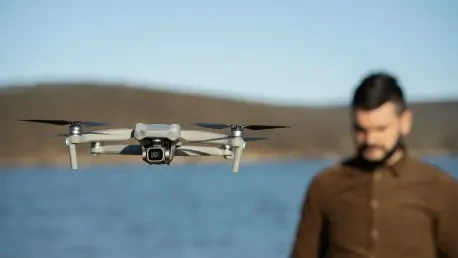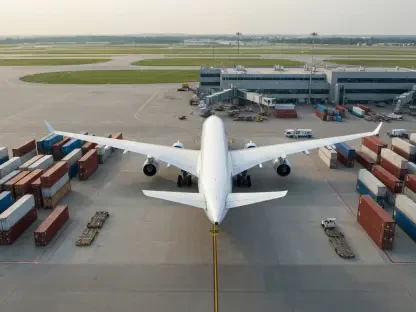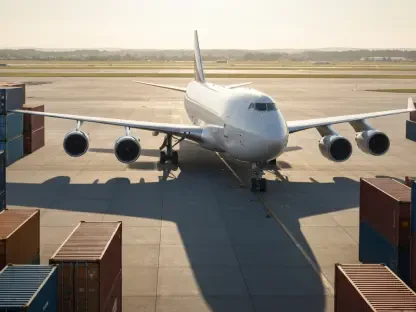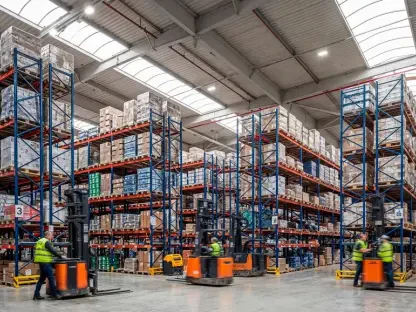The UK’s recent regulatory decisions have ushered in a transformative phase for the deployment of unmanned aerial vehicles (UAVs) through the authorization of long-range Beyond Visual Line of Sight (BVLOS) drone flights over the nation’s critical infrastructure. This significant approval by the UK Civil Aviation Authority (CAA) sets a precedent for how drones are integrated into complex airspace systems, specifically enabling operations by the Drone Major Group. For the first time, drones will operate beyond visual range in non-segmented airspace, paving the way for a future where UAVs play a central role in infrastructure management and maintenance. This development has wide-ranging implications, starting with the rail industry, but also extending to sectors such as energy, utilities, telecom, and national defense.
Pioneering Progress in Railway Management
Operational Efficiency and Safety in Rail Infrastructure
The introduction of BVLOS drone operations marks a groundbreaking evolution in how railways are managed in the UK. With Network Rail backing trial flights over a 12km route between Wolverhampton and Sandwell & Dudley Station, drones equipped with advanced monitoring capabilities are set to redefine the standards for railway maintenance. These drones are engineered to perform autonomous inspections, detecting wear, potential faults, and intrusion phenomena with unparalleled accuracy and speed. Drone technology offers the unique capability to survey vast stretches of track efficiently, ensuring the safety and functionality of these crucial transportation arteries with minimal human intervention. The autonomous nature of these UAVs also adds a layer of safety, enabling operations in conditions where manual inspection would pose significant risks.
Cost-Effective Solutions Through Advanced Technology
The economic advantages of deploying BVLOS drones in railway maintenance cannot be overstated. Traditional methods, which often relied on manned inspections and periodic helicopter flyovers, present significant logistical and financial challenges. By replacing these methods with drone technology, the rail industry stands to benefit from considerable cost savings—reports suggest potential reductions in expenditure amounting to millions annually. With the drones’ ability to deliver real-time data and actionable intelligence, railway operators can make informed decisions, preempting small issues before they escalate into costly repairs. This proactive approach not only reduces costs but also ensures that maintenance operations cause minimal disruption, maintaining the vital connectivity offered by national rail networks.
Digital Tethering™: A Pivotal Technological Breakthrough
Revolutionizing UAV Navigation and Control
At the heart of these BVLOS operations is the revolutionary Digital Tethering™ technology developed by Drone Major Group. This innovative system fundamentally alters the approach to UAV navigation by creating a virtual corridor within which drones operate, akin to the structured pathways navigated by commercial aircraft. Unlike GPS or GNSS-reliant systems that may falter in signal-deprived environments, Digital Tethering™ delivers precise real-time positioning through a sophisticated setup that ensures UAVs remain steadfast within designated flight paths. The technology’s resilience in GPS-compromised settings adds a critical layer of reliability and safety, mitigating risks associated with autonomous drone operations across complex and potentially hazardous landscapes.
Enhancing Surveillance and Operational Resilience
The application of Digital Tethering™ has been successfully demonstrated in trials along the Severn Valley Railway and near Wolverhampton Station, confirming substantial enhancements in real-time surveillance capabilities. These trials underscore the technology’s potential for rapid detection of unauthorized access and its ability to bolster operational resilience against disruptions. The integration of this technology is poised to expand beyond the confines of railway management, supporting broad infrastructure networks such as energy grids, utility lines, and communication networks. With the capability to deliver unmatched precision and monitoring in real time, Digital Tethering™ reinforces the strategic advantages drones offer in safeguarding and maintaining essential services, aligning perfectly with the UK’s goals for airspace modernization.
Transformative Impacts on National Infrastructure
Broadening Application Across Essential Sectors
The ramifications of the CAA’s approval extend well beyond the railway sector, promising to revolutionize other critical infrastructure components in the UK. As BVLOS drone technology becomes more deeply entrenched, sectors such as energy and utilities are poised to capitalize on its capabilities. Drones, equipped with specialized sensors and precision technology, provide unparalleled opportunities for monitoring pipelines, power grids, and communication towers. Their ability to traverse challenging or hazardous environments makes them ideal for inspecting and maintaining critical assets with minimal risk to human operators, offering a cost-effective and efficient alternative to traditional inspection and repair methods synonymous with such sectors.
Paving the Way for the Future of Aerospace
The landmark decision to approve long-range BVLOS drone operations signals a paradigm shift in UK aviation policy and aerospace technology integration. By establishing a robust framework for these operations, the UK sets a global benchmark, inviting other nations to explore similar innovations in drone usage. The policy change also serves as a catalyst for transitioning UAV services from experimental concepts to established procedures that deliver tangible benefits to infrastructure sectors. By showcasing the feasibility and benefits of BVLOS operations, the UK affirms its commitment to nurturing an environment conducive to technological advancement, bolstering its leadership in the international arena of drone innovation and airspace modernization.
Drone Technology: Shaping the Future of Urban Environments
Urban Applications and Strengthening Security Frameworks
Within urban landscapes, BVLOS drones introduce compelling possibilities for augmenting traditional infrastructure management and securing metropolitan environments. The precision and adaptability of these drones make them well-suited for monitoring complex urban infrastructure, detecting vulnerabilities, and responding to incidents with rapid efficacy. Particularly in densely populated areas where traditional security measures may struggle, drones offer a discrete yet powerful solution for enhancing situational awareness and preempting potential threats. Their real-time data capabilities support agile decision-making, ensuring urban areas remain safe and operational amidst evolving challenges.
Empowering a New Wave of Technological Developments
At the center of Beyond Visual Line of Sight (BVLOS) operations lies the groundbreaking Digital Tethering™ technology from Drone Major Group. This cutting-edge system transforms UAV navigation by establishing virtual corridors for drones, similar to the structured airways used by commercial jets. Unlike traditional navigation relying on GPS or GNSS, which can falter in areas with weak signals, Digital Tethering™ offers precise real-time positioning through a sophisticated setup, ensuring unmanned aerial vehicles (UAVs) strictly adhere to designated flight paths. This feature is particularly valuable in environments where GPS signals are unreliable, offering an added layer of reliability and safety. By mitigating risks associated with autonomous drone operations in complex and potentially dangerous terrains, Digital Tethering™ enhances both operational efficiency and safety for UAVs. It ensures steadiness in flight paths, proving vital for challenging landscapes and places where traditional systems may fall short.









